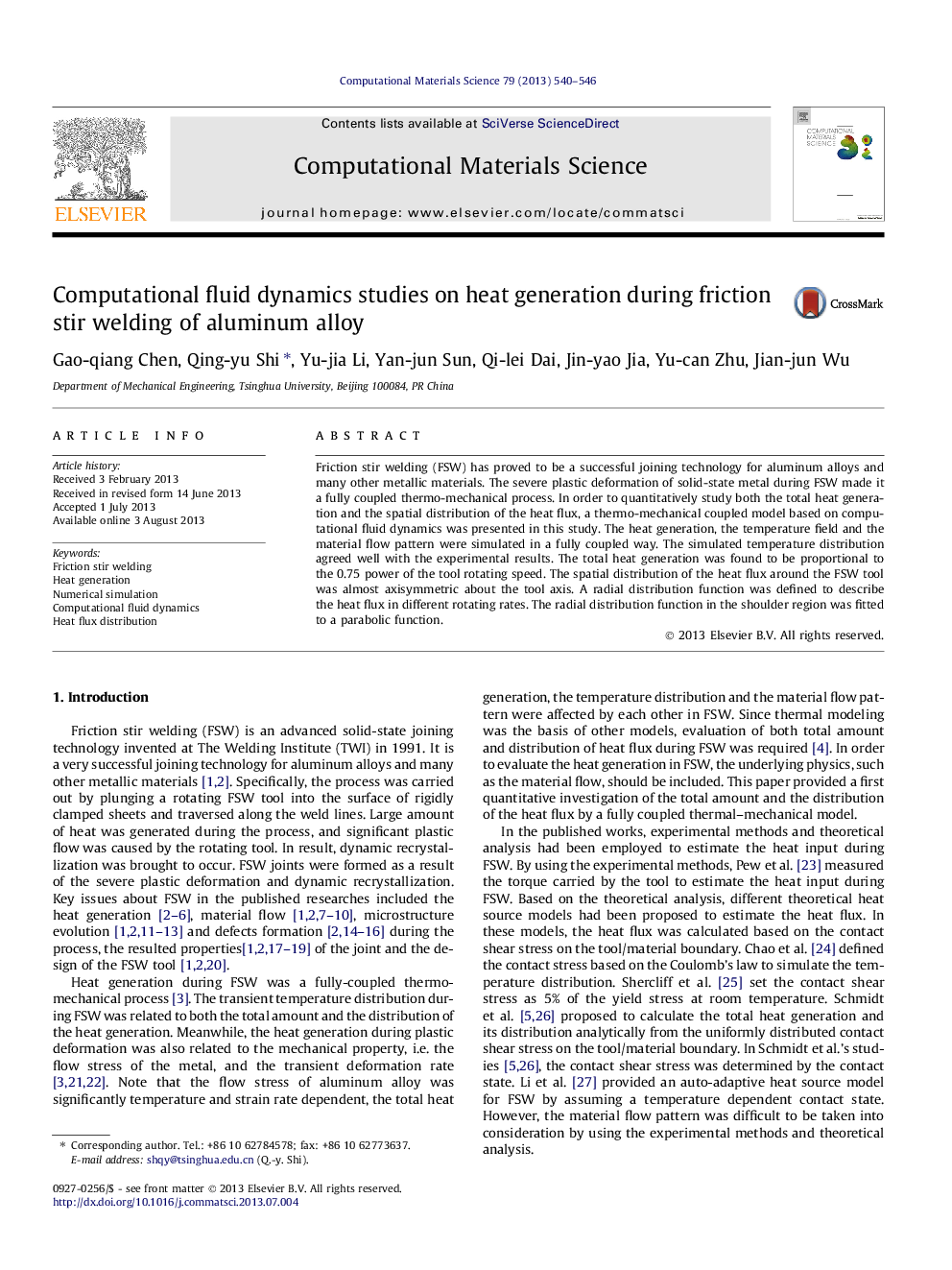| Article ID | Journal | Published Year | Pages | File Type |
|---|---|---|---|---|
| 7961609 | Computational Materials Science | 2013 | 7 Pages |
Abstract
Friction stir welding (FSW) has proved to be a successful joining technology for aluminum alloys and many other metallic materials. The severe plastic deformation of solid-state metal during FSW made it a fully coupled thermo-mechanical process. In order to quantitatively study both the total heat generation and the spatial distribution of the heat flux, a thermo-mechanical coupled model based on computational fluid dynamics was presented in this study. The heat generation, the temperature field and the material flow pattern were simulated in a fully coupled way. The simulated temperature distribution agreed well with the experimental results. The total heat generation was found to be proportional to the 0.75 power of the tool rotating speed. The spatial distribution of the heat flux around the FSW tool was almost axisymmetric about the tool axis. A radial distribution function was defined to describe the heat flux in different rotating rates. The radial distribution function in the shoulder region was fitted to a parabolic function.
Keywords
Related Topics
Physical Sciences and Engineering
Engineering
Computational Mechanics
Authors
Gao-qiang Chen, Qing-yu Shi, Yu-jia Li, Yan-jun Sun, Qi-lei Dai, Jin-yao Jia, Yu-can Zhu, Jian-jun Wu,
